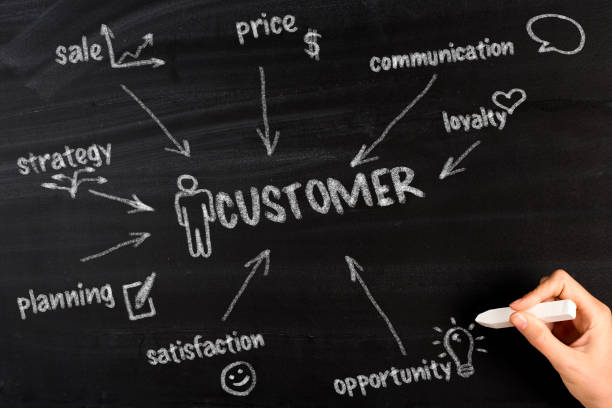Are You Truly Listening to Your Customers? What if the secret to marketing success lies in understanding your customers better than they understand themselves? Are your strategies built on assumptions, or are they grounded in solid data about what your audience really wants and needs? In a world where customer attention is fleeting, how do you ensure your brand stays relevant and impactful? Consumer insights hold the key.
These insights allow you to see beyond the numbers, unlocking the “why” behind customer behavior and guiding you to craft strategies that resonate. Let’s explore why consumer insights are so critical, how to gather them, and the transformative role they play in shaping effective marketing strategies.
What Exactly Are Consumer Insights? – Consumer Insights
At its core, consumer insight is the process of understanding your target audience on a deeper, more meaningful level. It involves interpreting data to uncover the motivations, preferences, and pain points that drive their decisions.
For instance, consider two customers shopping for fitness equipment. One might be motivated by health concerns, while the other is driven by the desire to enhance athletic performance. Knowing these motivations allows you to tailor your messaging, products, and marketing strategies to address their specific needs.
Key Characteristics of Consumer Insights
- Actionable: Insights should guide decision-making. Knowing “why” your customers behave a certain way helps you strategize effectively.
- Contextual: Insights must be relevant to your industry and business goals.
- Behavioral: They focus on the patterns and motivations behind actions, not just the actions themselves.
The Importance of Consumer Insights in Marketing
Consumer insights are the cornerstone of effective marketing, enabling brands to deeply understand their audience and create strategies that truly resonate.
1. Building Deeper Connections
Customers expect brands to understand their needs. Insights provide the foundation for building campaigns that resonate emotionally, making your audience feel seen and valued.
2. Gaining a Competitive Edge
In crowded markets, businesses that use consumer insights effectively can differentiate themselves. When you understand your audience better than your competitors, you can craft unique value propositions.
3. Increasing ROI – Consumer Insights
Marketing strategies informed by data reduce guesswork, allowing you to allocate resources to high-impact activities. This results in better returns on your investments.
4. Driving Innovation
Consumer insights can reveal unmet needs or frustrations that spark new product ideas. For example, noticing a demand for more eco-friendly packaging might inspire sustainable product innovations.
How to Gather Consumer Insights: Practical Strategies – Consumer Insights
Gathering consumer insights requires a mix of data-driven tools and direct customer engagement to uncover valuable patterns and motivations.
1. Dive Into Data Analytics
Platforms like Google Analytics, Facebook Insights, and Shopify’s dashboard are rich with actionable data. These tools provide:
- Demographic Data: Age, gender, location, and more.
- Behavioral Insights: Time spent on your website, most-visited pages, and conversion paths.
By analyzing this data, you can identify trends and areas for improvement.
2. Listen to Your Customers Directly
Sometimes, the simplest way to understand your audience is to ask them. Tools like:
- Surveys: Ask open-ended and specific questions about their experience with your brand.
- Feedback Forms: These are great post-purchase tools to understand pain points or satisfaction levels.

3. Social Media Monitoring – Consumer Insights
Social platforms are goldmines for understanding what customers say about your brand. Use tools like:
- Hootsuite: To monitor mentions and keywords.
- Brandwatch: For in-depth social listening and trend analysis.
Pay attention to common themes in comments, hashtags, and user-generated content.
4. Utilize Third-Party Research
If conducting your own research seems overwhelming, consider leveraging third-party resources. Industry reports, competitor studies, and market analysis can provide a macro view of trends affecting your business.
5. Customer Journey Mapping
Break down the steps your customers take from awareness to purchase. This process helps identify drop-off points and areas needing improvement, such as checkout simplicity or clearer product descriptions.
How Consumer Insights Directly Shape Marketing Strategies – Consumer Insights
Consumer insights directly influence marketing strategies by providing the clarity needed to refine audiences, personalize experiences, and optimize campaigns for maximum impact.
1. Refining Your Target Audience
Knowing your audience is more than just identifying their age or location—it’s about understanding their values, goals, and struggles. Consumer insights help businesses develop detailed buyer personas.
For example:
- A skincare brand may uncover that its customers include teenagers battling acne and adults seeking anti-aging solutions.
- Each group requires different messaging, product recommendations, and advertising channels.
By refining segmentation, you can create hyper-targeted strategies that speak directly to each audience group.
2. Personalizing the Customer Experience
Did you know 91% of consumers are more likely to shop with brands that provide personalized offers? Insights enable you to tailor experiences that align with customer expectations.
Examples of Personalization in Action:
- Email Campaigns: Send targeted emails based on browsing history or purchase behavior.
- Content Marketing: Create blogs or videos that address specific pain points identified through insights.
- Dynamic Ads: Show personalized product recommendations on platforms like Facebook and Google.
3. Optimizing Product Offerings – Consumer Insights
Consumer insights help identify trends that inform product development. For example:
- An increase in searches for “vegan snacks” might encourage a food brand to launch a new line of plant-based treats.
By addressing these emerging needs, you position your brand as relevant and forward-thinking.
4. Fine-Tuning Marketing Channels
Insights can also reveal where your audience spends the most time online. Are they scrolling Instagram, reading LinkedIn articles, or watching TikToks? Knowing this allows you to focus your efforts on platforms where your message will have the greatest impact.

Overcoming Challenges in Gathering Consumer Insights
Overcoming challenges in gathering consumer insights involves navigating data overload, ensuring ethical practices, and interpreting findings accurately for actionable results.
1. Too Much Data, Too Little Focus
With so much data available, it’s easy to get overwhelmed. Focus on metrics that align directly with your goals, such as conversion rates, engagement levels, or customer lifetime value.
2. Privacy Concerns
Transparency is key. Inform customers about how their data will be used and ensure compliance with data privacy laws like GDPR or CCPA. Ethical data usage builds trust.
3. Misinterpreting Insights – Consumer Insights
Insights must be viewed within the proper context. Combine quantitative data (numbers) with qualitative insights (customer stories) to create a full picture.
Real-World Success Stories
Real-world success stories demonstrate the transformative power of consumer insights in crafting impactful and memorable marketing campaigns.
Netflix: Tailored Recommendations
Netflix uses consumer insights to power its recommendation engine. By analyzing viewing habits, they suggest content users are likely to enjoy, driving higher engagement and customer satisfaction.
Nike: “You Can’t Stop Us” Campaign
Nike’s ability to tap into societal conversations stems from thorough insights. This campaign addressed resilience and inclusion, themes that resonated strongly during challenging times.
Future Trends in Consumer Insights
Future trends in consumer insights are reshaping how brands understand their audience, with advancements like AI, real-time feedback, and sentiment analysis leading the way.
1. Predictive Analytics and AI
Tools powered by artificial intelligence can analyze massive datasets to predict future customer behaviors, such as product preferences or churn risks.
2. Real-Time Feedback Loops
Technology is making it easier to gather insights in real time, allowing marketers to pivot strategies instantly.
3. Sentiment Analysis
Advanced tools now enable brands to measure the emotional tone of customer feedback, providing deeper insights into how people feel about their products or campaigns.

Take Action: Building Insight-Driven Marketing Strategies – Consumer Insights
Here’s how you can start leveraging consumer insights today:
- Set Clear Goals: Define what you want to achieve—whether it’s improving engagement, driving conversions, or enhancing brand loyalty.
- Invest in Tools: Explore platforms like Google Analytics, HubSpot, or Sprinklr to streamline data collection and interpretation.
- Collaborate: Share insights across teams, including sales, product development, and customer service, for a unified approach.
- Test and Adapt: Continuously refine your strategies based on what the data reveals.
Why Consumer Insights Matter More Than Ever – Consumer Insights
In the ever-evolving world of marketing, understanding your customers is not just an advantage—it’s a necessity. Consumer insights empower you to:
- Anticipate trends.
- Build meaningful connections.
- Create campaigns that don’t just attract attention but foster loyalty.
Are you ready to dive deeper into the minds of your customers and revolutionize your marketing strategies?








